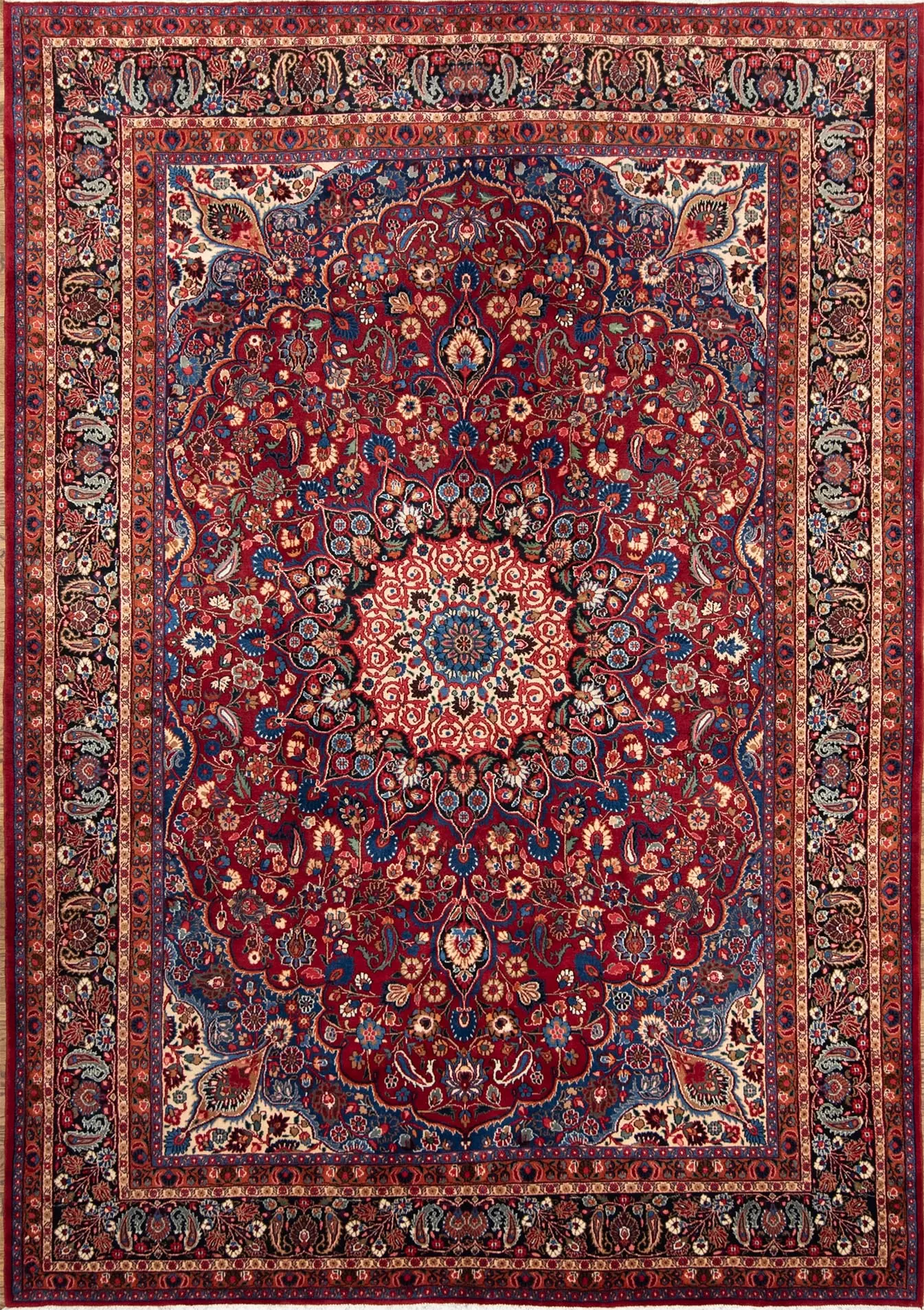The Beautiful History of Mood Rugs
The history of magnificent Mood rugs or Khorasan carpets dates back to ancient Iraq, when its largest province, Khorasan, spanned the nation’s lavish northeast region.

The regions witnessed the footfall of countless foreign explorers and invaders, including Arabs, Afghans, Greeks, and Seljuks. In fact, the entire region was once the largest province of Persia, which is why it was referred to as Greater Khorasan. Its area encompassed parts of Afghanistan, Kazakhstan, Tajikistan, Turkmenistan, Uzbekistan, and a significant portion of Baluchestan.
The History of Rug Making in Khorasan:
Carpets from Khorasan trace their history back to the sixteenth century. The local tribal communities were rampantly engaged in making beautiful rugs with the utmost perfection of that era. However, the exact time is still a matter of debate among historians.
The magnificent designs epitomized the art and skills of the Islamic world. This rug-making industry was in the high limelight and attracted the wealthy class who could afford such luxurious carpets.
The vast majority of oriental carpets from Khorasan, the hub of the most beautiful rugs, were sold in Mashhad, the region’s capital. Khorasan rugs from the sixteenth to eighteenth century are now conserved in museums across the world as part of a unique collection.
Other carpet-producing centers around Mashad were Kashmar (Turshis), Moud, Ghain, Sabzevar, and Birjand. To protect the best standards of this age-old business, Shah Abbas, the ruler, regularly confiscated and destroyed carpets that were improperly woven or had inappropriate coloring procedures.
The Impact of Afghan Attack On Rug Making:
Parallel to the beautiful rug making, political disturbances, and the power struggle were common phenomena. It drastically shaped the fate of the rug and crafts industry.
The Afghans invaded Iran in 1722, leading to political unrest and the downfall of the rug industry, particularly in urban places like Mashhad. The century-old art was struggling for its existence.
Fortunately, Khorasan successfully revived the fantastic rug business with the help of the Iranian Royal Court. The beautiful carpets were exclusively made to meet the demands of the ruling families and their associates in the Court.
Baluchi nomads who lived in southern regions also produced many Baluch-style carpets. The legacy continues till now.
The Famous Persian Safavid Carpet Design:
The seventeenth century was also a time when the famous Persian Safavid Carpets were woven. Interestingly, their design was called Portuguese. According to some researchers, it received this title because Portugal’s rulership commissioned this marine design when both nations had positive diplomatic and trade ties.
These carpets come from the Khorasan area and are preserved in a few museums. The beautiful color scheme of the field is replicated in the beautiful central medallions of the carpet design. The four corners of the area are decorated with a nautical pattern of floating ships in the ocean. Mesmerizing palmettes with foliage and vines may also be observed on borders.
Herat and Mashhad were the two significant weaving centers in Khorasan. These towns had excellent dyeing techniques, and the wool that was grown nearby was of high quality. The carpets have superb color and are well-known in the vintage market for their outstanding aesthetic appeal.
Since the Safavid Dynasty, Kurdish tribes have been the inhabitants of the northern Khorasan region. Here, rugs with Kurdish influences were created by weavers.
Khorasan sizes ranged from little tribal objects to enormous room rugs. Flat Woven rugs were produced in a variety of sizes, from little purses to large gallery carpets.
Mood Rugs In Modern Decor:
Mood Rugs have intricate Mandala patterns that go well with showpieces and artistic wall paintings. These lovely carpets are ideal for those who love elaborate designs and luxurious decor. You can choose the primary color from one of these carpets and then purchase matching furniture covers in the same shade. These antique rugs are popular in Western countries and can be found in lavish villas, bungalows, and premium hotels. They have a long heritage and are available in a variety of Kurdish-influenced geometric designs.
Beautiful Rugs provides the best hand-woven vegetable-dyed Persian rugs. Our awe-inspiring mood rugs are made from pure silk and fine-quality Kork wool. These beautiful antique carpets comprise a silk foundation with vibrant colors like beige, brown, and gray, epitomizing the pure essence of Persian culture.
Showing all 3 results



